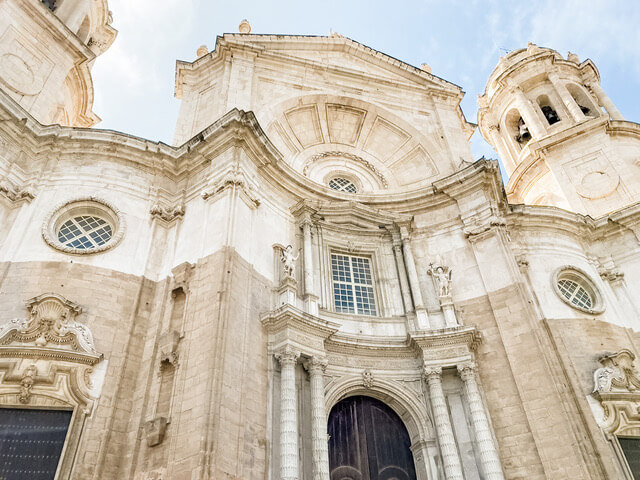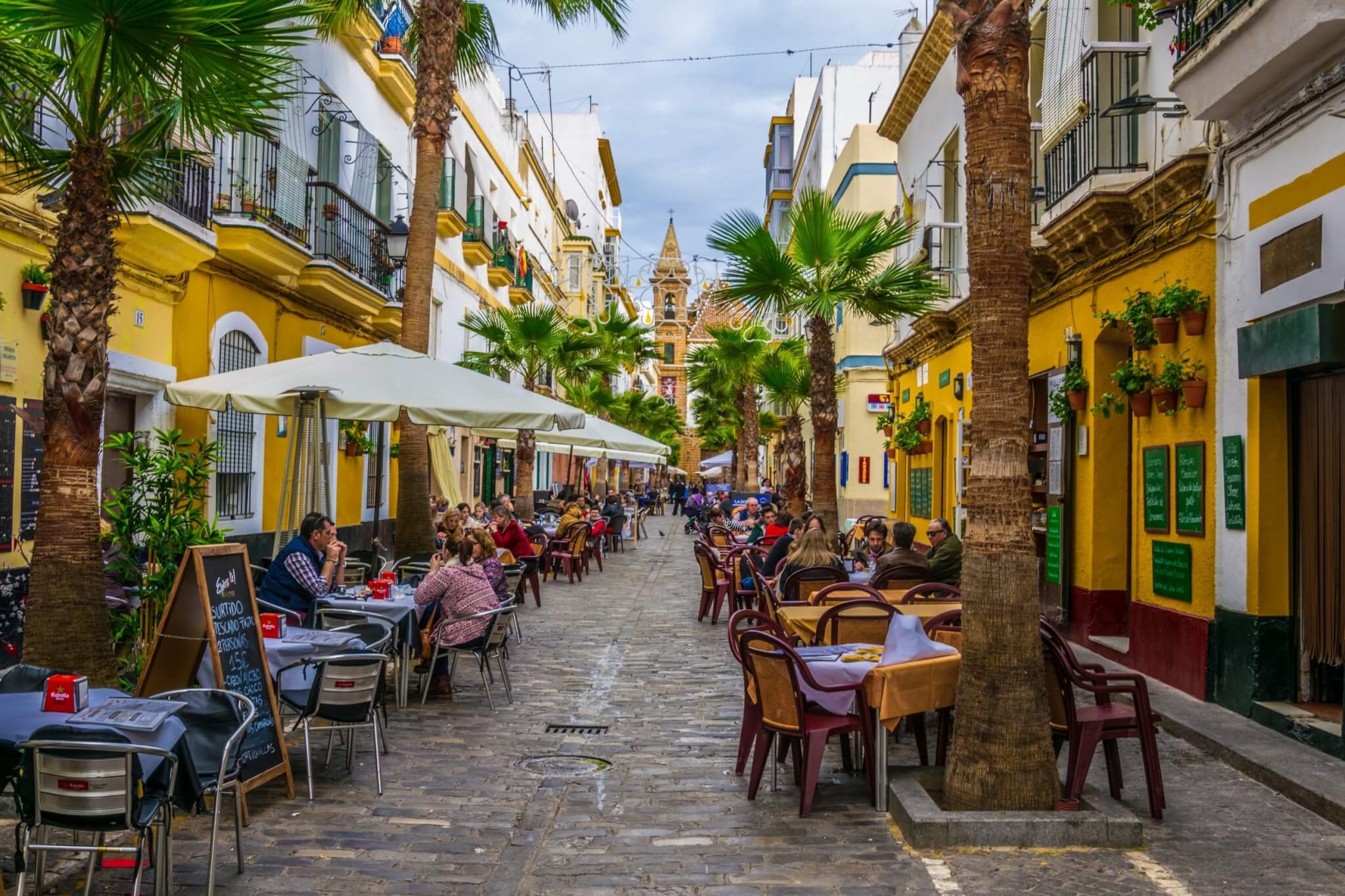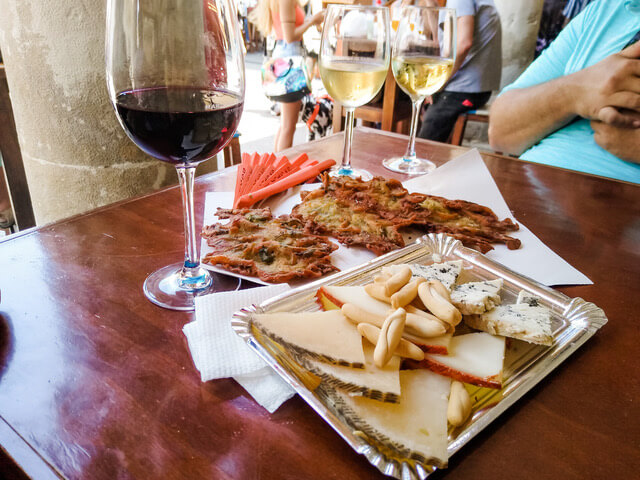A mere 25 miles outside Naval Station Rota, Cádiz, is a traveler’s delight in southern Spain. Situated on a narrow slice of land surrounded by the sea with a population of 116,000, the town boasts a rich history, iconic views, and culinary adventure.
“I have to say, my favorite thing about Cádiz is feeling like I’m walking through history,” said Adriane Anderson, a tour guide based in southern Spain. “The winding roads take you back in time. The gastronomy and eating is another favorite.”

Southern Spain’s history
Today, the city is the principal homeport of the Spanish navy but the region’s history dates back 3,000 years when it was founded by the Phoenicians. Since that time, Roman, Muslim, and Catholic influences have left distinct impressions upon the architecture, people, and culture.
The Roman Theatre of Cádiz, which was likely built during the 1st century, is one of the largest theaters built in the Roman empire. The structure was abandoned in the 4th century and a fortress was built on its ruins in the 13th century. Today, visitors can tour the theatre at no charge.
Cádiz thrived during the 15th and 16th centuries when Spain was one of the most powerful nations in Europe and the area was a base for exploration and trade. More than 100 watchtowers from this period remain, including the iconic Torre Tavira, which was traditionally used for spotting ships.
On the waterfront is the domed, 18th-century Cádiz Cathedral known in Spanish as Catedral Nueva — the city’s most iconic building. The building, which features baroque and neoclassical elements, took five architects 116 years to complete.

Culture
Musical singing and dancing mixed with tap, the exquisite sounds of the guitar, tambourines, and bells that give Cádiz a gypsy vibe. Therefore, you must be sure to see a local Flamenco dance performance to fully experience southern Spain’s culture.
Recreation
With an average of 300 days of sunshine per year, the region is referred to as Costa de Luz — The Coast of Light. Visitors and locals enjoy the beach, easily accessible from town. You can also visit the region’s many secluded beach destinations such as Playa de Castillejos or Playa de Cortinas.
Anderson recommends adding horseback riding on the beach to your bucket list or taking the time to sit and watch the sunset and listen to the splashing waves.
Southern Spain’s food and drink
Tapas anyone? Make sure you try paella, tortilla de Camarones, and of course, olives. If you are a cheese lovers, don’t miss olive oil cheese and international award-winning rosemary cheese. From bar hopping to wine tasting, take a sip of Cruzcampo, sweet sherry, chocolate-infused shots, and spiced rums.
Take a trip to the local fish market and see where the locals and nearby restaurants shop. “One of the most popular things to do is buy a bottle of sherry wine; fry some fresh fish; go to the beach to eat, drink, and enjoy with friends,” Anderson said.
“I like to try different things, like going to different tapas bars, museums, and admiring beautiful monuments,” Anderson added, and she recommends you do too.







































